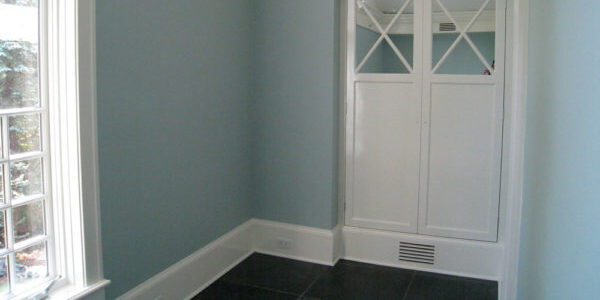
Five Tips to Avoid Rookie Painting Mistakes
- Know your color—surveying those tiny paint-chip color samples can be overwhelming when we’re faced with them all lined up in gradient rows in their store display rack. What’s the difference between “Calves’ Liver Red” and “Muddy Maroon”? What is “Polar Sunset” and “Autumn Dawn”? What’s with those names? You’ll never be happy with the paint color you’ve chosen for a room if you depend on the color being true to the color you saw in the store, under fluorescent lights, on a piece of paper about two-square-inches wide. The only way to be sure you will be happy with your paint color choice once it is home and on your walls is to bring some home and put it on your walls. Most paint supply purveyors offer a small jar of a paint sample, typically several ounces, so that you can spread the color out and view it in all kinds of light; artificial or natural, daylight, dawn, and evening. The advantage here is you can try different shades of a similar color to help you winnow down your choices. Live with your color options for a day or two to be sure it is the right color for you.
- Determine shades of gray—or white, or peach. It may be tempting to simplify the whole color-choice process by simply specifying “white,” “yellow,” or “light blue” but the odds are you won’t get the color that you have in your mind’s eye. There are countless tints and shades for a rainbow of colors of paint, and you can’t go by the name (see #1 above). Be specific about paint color and manufacturer when ordering paint for your home or business. Also, be sure to mix the different cans of paint together to be sure that the paint color will be consistent throughout the job, and so that one wall is not a shade darker than it’s adjoining partner because the separate cans of paint were opened in sequence.
- Reflect on sheen—the sheen of your paint means whether it is glossy, semi-gloss, or flat paint. It is also a clue to how much light the paint will reflect back into the room. There are subcategories to these three main categories, too (eggshell, satin, matte). Generally, a glossy surface will look shiny and will reflect light back into the room; flat paint has no glossy surface but rather a textural finish that absorbs light; semi-gloss is best described as half of both glossy and flat—semi-gloss has a medium sheen. The paint’s sheen is a factor in the use of the room, or it should be. Dirt, grease, or stains on a glossy or semi-glass finish can often be wiped away with a damp sponge. Flat paint tends to hold on to dirt or stains.
- Address the ceiling—a professional-quality paint job has to include painting the ceiling to be complete. Do more than say “Hello, ceiling!” Consider the ceiling of any room the “fifth wall” in the room that must be painted. You’ll never notice the fading, wear, and dirt on your ceiling more until you paint your walls. A new, clean paint job on the walls will highlight all the work that is needed and was overlooked when painting walls.
- Call a professional—a new paint job for a room in our homes or business seems like a manageable proposition for any do-it-yourselfer. But a truly professional painter like Gallo Paint knows the details that make an average repaint a spectacular new look, applied with care, detail, and craftsmanship. You may save yourself some coin by doing the job yourself, or you can save yourself the research, shopping, prepping, detailing, and paint application by calling Gallo Paint.








